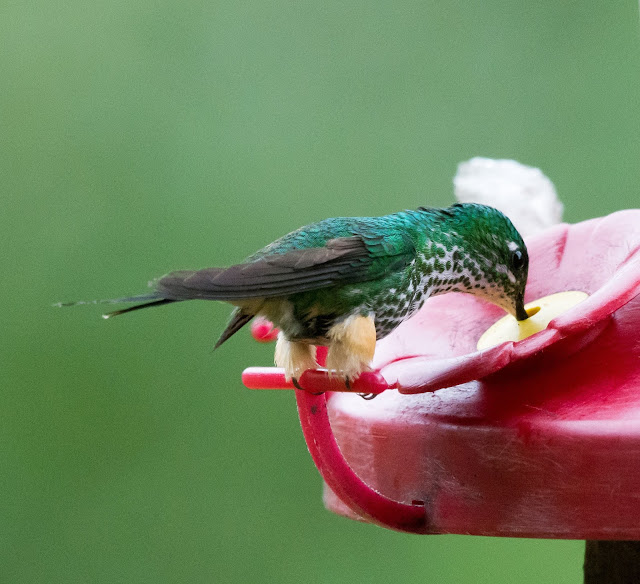Hummingbirds and tanagers were not the only families of birds that we encountered during our stay in Ecuador. There were so many more, but numbers in the families were a bit smaller and did not compare to the hummingbirds and tanagers. So now we move on to the rest of the birds. There are so many that it will require two posts to cover the rest.
Going to start off with 4 different birds that all start out with the word 'Andean' as the first part of the name. While none of them are related, it does suggest that these species are most likely associated with the Andes Mountains and probably not found outside of this remarkable mountain range of South America.
Andean Lapwing
Andean Guan
Andean Condor - Not great photos by any means, but seeing 2 of them was quite special!
Andean Condor
This next bird is a bird I have about often dreamed about seeing since I was a child. After seeing pictures of a Cock-of-the-rock when I was young, I was captivated by its beauty. And WOW! are they loud and noisy. Here is a link to a video I made in the dark with them calling.
Andean Cock-of-the-Rock
We also had the pleasure of adding 4 species of antpitta to our list, of which I was able to photograph 3 of them. These birds can be difficult to spot even if one is calling. Some of the land owners have discovered that these birds sometimes respond to being given a little incentive to show themselves when fed a few worms from the land owners. And some of these owners have named their local birds and are pleased to show them to birders that come to Ecuador. Notice they all have short tails.
Chestnut-crowned Antpitta
Moustached Antpitta - Listed as 'Threatened' (vulnerable).
White-bellied Antpitta
Now we can move on to a toucan, a toucanet, a trogon, a quetzal, and an araçari. These birds are quite popular with birders and rightfully so. They are unique and most are very colorful and a bit mysterious.
Choco Toucan
Collared Araçari
Crimson-rumped Toucanet
Golden-headed Quetzal
Masked Trogon - Male
Masked Trogon - Female
Plate-billed Mountain-Toucan
The last four photos are an eclectic set of photos. A couple of them are nocturnal birds, one of them is a wood-quail, and one of them is a fruiteater.
Common Potoo - On nest
Common Potoo - There is a chick in front of the bird under all those feathers.
Dark-backed Wood-Quail
Barred Fruiteater
White-throated Screech-Owl
Will have one more blog post to finish off my Ecuador trip coming up in the near future.
Hope you enjoyed the various different birds.
























































